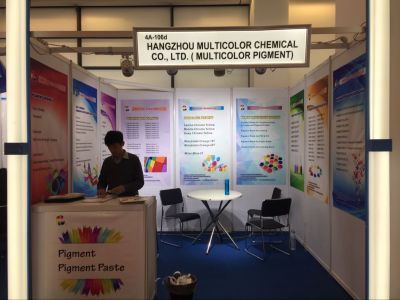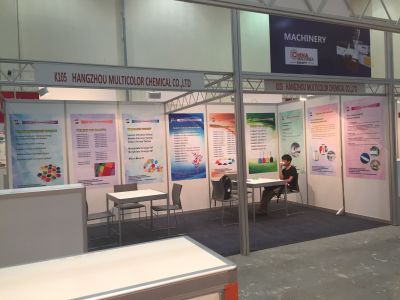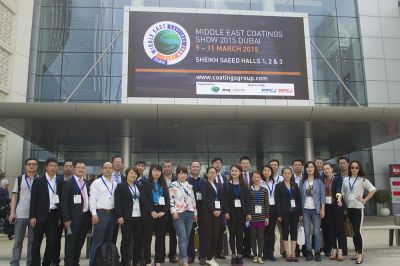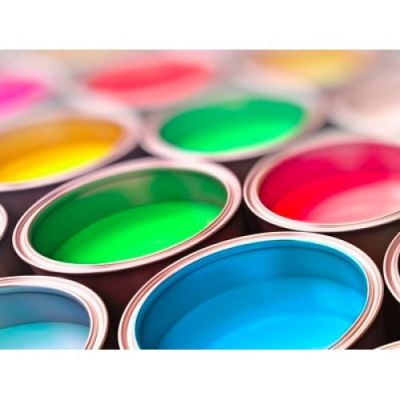
2017 Europ Coating show - Multicolor is your color source
2016 American coating show multicolor will be your one of best suppliers

2015ABRAFATI south amarica is our main market

2015 Middle East Coatings Show= Multicolor is your trusted partner
2012CHINACOAT Multicolor is a big famliy

Quality paints rely on decent pigment dispersion in the manufacturing process. Without proper dispersion of pigments, the paint will not hold up and maintain the expected colour standards. Pigments are insoluble particles that impart colour to paint and other materials. Proper pigment and additive selection are vital to ensure the finished paint or coating effectively displays the required colour. There are different ways that pigments are dispersed in materials, including paints. Therefore, understanding the properties and chemistry of the pigment is vital for knowing how it will be distributed. Properly dispersed pigments are crucial to the manufacture of good quality paints. Some of the essential properties that are required for good pigment dispersion are listed below: · Stability Pigments need to be chosen that have good lightfastness in order for the paint to have a resounding colour that does not fade with time. Dyes generally have very poor lightfastness which is why pigments are used instead. · Viscosity Another significant factor for paint and coatings is even thickness. Lower viscosity will ensure better distribution of pigment dispersions. · Bright Hue The pigments used in dispersions for paint manufacturing are chosen for their bright hues. The pigments, varnishes and other ingredients in the paint must dry to give a glossy finish in order to achieve the greatest vibrancy of colour. · Optimal Pigment Size A crucial aspect to understand about dispersion of pigments is the size of the particles. Smaller particle size of pigment generally provides better transparency. More importantly, the finer the grind of the pigment the greater the colour strength that can be achieved from a given quantity of pigment. This can either lead to stronger shades or, given that the pigment is usually one of the more expensive components of a paint, it can make the formulation cheaper.

Pigment dispersions are basically fine dispersions of pigment in aqueous, solvent or universal paint systems. Pigments are made up of tiny pieces that are soluble and dispersed within materials like paint to give you paint colours. All quality paints require dispersion during manufacture so that the paint maintains its quality, holds onto its vital colours and coats the product or material effectively. The pigment dispersion process is made up of changing dry pigments into pigment dispersion that is stable and small enough to achieve its intended color and balance. This is a challenging thing to achieve however as it is a complicated process involving different pigment types, solvents, dispersing agents and resin. The dispersion steps of a pigment in liquid can be separated into three: - Pigment wetting is where the air and moisture is interchanged with resin - Grinding is where the pigment mixtures are broken into finer parts by force applied to it - Stabilisation is where the pigment dispersion is stabilised by dispersal agents. What Are The Essential Properties Of Pigment Dispersions Needed For Good Paint Quality: There are a few different properties that are needed for quality pigment dispersal: Auto Dispersion: Pigments that are high quality are auto soluble. Being able to dissolve in any solution is always a plus. This is very useful for businesses as it can vastly increase the speed of production which allows a business to finish its product sooner rather than later. This is useful for a range of manufacturing industry companies such as factories reliant on volume over quality. Pigments that are fast drying are also needed by similar industries as the manufacturing process needs paint that paints and drys fast. Viscosity This is an important factor in the creation of top quality paint and coatings, as it ensures that the pigment is dispersed properly. A lower viscosity allows a greater distribution of pigment and ensures a finish you are happy with. Stability Certain pigments like Phthalocyanine are very stable and are ideal for materials such as fabric. They are also very fine which allows the application of stunning colour to materials. On such materials pigments have to be resistant to fading by ensuring an enduring colour mixing quality. Ideal Size Of Pigment Another advantage of using pigment dispersion is how you can decide to change the size of the particle. If you are looking for a style of pigment dispersion that boasts a transparent finish then you can choose a smaller particle size. If instead you are looking for an opaque finish with inorganic pigments, you can instead employ larger particles. The paint can also be customised so that it suits the product it is being used on perfectly, as well as choosing the required strength and shade. Environmental Considerations The paint and coatings industry have been identified as a major source of pollution and as such has been subject to stringent regulation in recent years to ensure that this risk is minimised. All pigment dispersions now have to be non-toxic, and a number of substances have now been banned. Industries Pigment Colours In Textile Industries The textile industry relies hugely on colour for their products, and as such could benefit hugely from pigment dispersal. The usual method of putting colour or designs onto their products is the use of dyes, However, anyone who has put a new coloured t-shirt in with whites in a washing machine knows, dyes can be problematic. Dyes also have very poor resistance to their colours fading due to their reaction to sunlight. Pigments are increasingly seen as better value and quality in the textile industry. The main reason for this is the thermal stability that pigment dispersion offers. The pigments that are offered by pigment dispersal are characterised by being water based and are known for being opaque. Companies That Require Industrial Coating E.G Construction Equipment, Aircraft Production Pigment dispersion has a number of advantages to industries that require industrial coating. One of the key benefits is being able to change the formula of pigment dispersal to adapt to the particular circumstances. Industrial coating has to deal with a wide range of different environments and materials depending on the industry and the particular materials used. By modifying or changing the pigments used, the ideal industrial coating can be found that suits the material and your business. By assuming that all coating is the same can be catastrophic for manufacturing processes and cause huge financial repercussions. The way to obtain a stable coating with the best performance and value are by picking the ideal pigment selection, ideal additive selection and the best means with which to achieve total dispersion. A highly qualified and experienced pigment dispersal company with years of accumulated skills across a range of industries will be able to ascertain the particular issues involved with your business’s case and create the correct industrial coating that is required. They will be able to make you aware of all the best options while consulting with you to end up with the industrial coating that your company deserves. Environmentally Aware Suppliers have made huge progress in trying to develop environmentally sound products due to environmental regulation. Not only are businesses trying become more green in order to avoid the financial or legal consequences associated with not complying with regulation; they are also trying to become more environmentally aware from a moral standpoint. As pigment suppliers receive more demands for greener products, they have risen to the challenge in turn. By going with pigment dispersion suppliers you can be certain that you are helping the planet, avoid and legal or financial repercussions and get advice on how to make your business as green as possible. New environmentally friendly developments include: ● The reduction of energy consumption during manufacture ● The reduction of water consumption during manufacture ● New methods of using less heavy metals like lead ● The support of heat management in buildings ● The collection of nitrate waste for use as fertiliser ● A general switch to renewable raw materials ● The integration of comprehensive waste gas treatment to remove nitrogen oxide from manufacture ● New processes that don’t put any demand on local drinking water supplies ● The conversion of biogas to energy.
Address: 6th Floor,Block 4,Orient International Plaza,No.60 North Shixin Road,Xiaoshan, Hangzhou,China
E-mail: sales@multicolorchemical.com
Tel: 86-0571-82775476
Fax: 86-0571-82738027
Copyright(C)2022,Hangzhou Multicolor Chemical Co., Ltd. All Rights Reserved. Supported by ChemNet Copyright Notice
备案号:浙ICP备2022006371号